Exploring Ultimaker Products in Information Technology
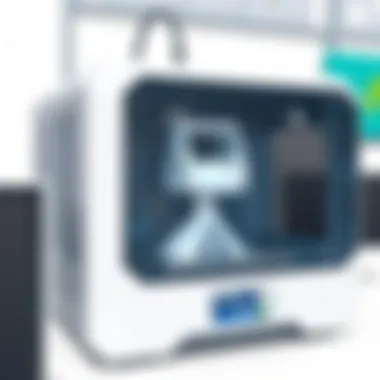
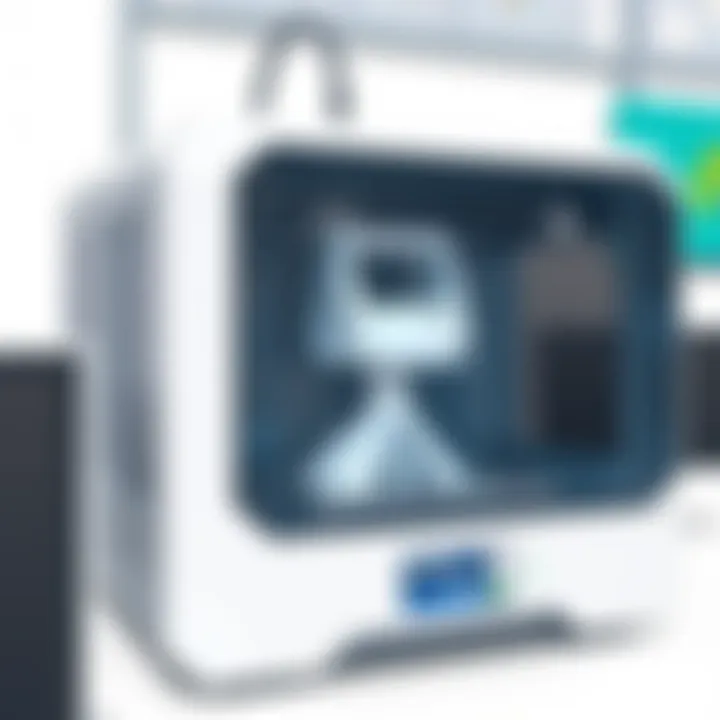
Intro
In recent years, the advancements in 3D printing technology have significantly influenced various sectors, particularly in information technology. Among the numerous players in this field, Ultimaker stands out, not just for its robust products but for its commitment to innovation. This guide aims to dissect Ultimaker's offerings, presenting a detailed analysis for IT professionals and tech enthusiasts alike. As we delve deeper, we will explore models, specifications, and the vast applications these printers offer.
The relevance of this topic cannot be overstated. 3D printing is no longer a niche solution; it has found a vital role in prototyping, production, and beyond. Hence, understanding Ultimaker's role in this landscape is essential for making informed decisions in today's fast-paced tech environment. We will draw comparisons with competitors and take a look at user experiences to provide a well-rounded perspective.
To set the stage, let’s first examine some crucial metrics that define the performance of Ultimaker products.
Intro to Ultimaker
In the world of modern technology, 3D printing stands as a revolutionary force, reshaping industries and changing the way we conceptualize production. At the heart of this transformation is Ultimaker, a brand that has gained significant traction among tech enthusiasts and IT professionals alike. The importance of understanding Ultimaker's products cannot be overstated, particularly in an era where rapid prototyping and agile manufacturing have become paramount.
The Evolution of Ultimaker
Ultimaker's journey began in 2011, birthed from the innovative minds in the Netherlands who sought to democratize 3D printing. Over the years, it has gradually carved out a niche within the vast landscape of digital fabrication. From their initial humble offerings, Ultimaker has continually enhanced its technology, demonstrating a keen ability to adapt to evolving market dynamics and consumer needs. The brands’ printers, now regarded as some of the best in the industry, have established a reputation for quality, reliability, and user-friendliness.
In the early days, Ultimaker’s design focused primarily on open-source principles, encouraging a community-driven approach that fostered collaboration. As technology advanced, they shifted to incorporate proprietary components, improving the overall printing experience, and expanding their product lines. The introduction of models like the Ultimaker S3 and S5, which represent significant leaps in features, showcases their commitment to constant improvement.
With increasing applications across different sectors—from education to engineering—Ultimaker's influence on 3D printing’s evolution remains pivotal. Their commitment to innovation is reflected in user feedback and continuous updates to their software, making them a trailblazer in the field.
Brand Mission and Vision
At the core of Ultimaker’s philosophy is a mission to empower creators and transform ideas into tangible objects through accessible technology. They strive to break down barriers to entry, whether in professional settings, classrooms, or at home, making 3D printing accessible to everyone. This vision is evident in their extensive support network, ongoing training sessions for educators, and development of user-friendly software interfaces.
Ultimaker aims not just to sell a product, but to foster a community of makers. Their vision extends to creating sustainable solutions, driving innovation while being conscious of environmental impact. They engage in responsible sourcing and promote the use of recyclable materials across their product lines. This holistic approach has not only attracted loyal customers but has also positioned Ultimaker as a leader in ethical manufacturing within the tech community.
"Ultimaker is not just about printing; it's about connecting minds and molding the future".
With an understanding of Ultimaker's roots and aspirations, let's explore their diverse range of products and the contributions they make to the field of 3D printing.
Product Line Overview
In the context of this article, the Product Line Overview serves as a critical gateway into understanding the full range of Ultimaker offerings. Ultimaker has crafted a portfolio that not only reflects the evolution of 3D printing technology but also caters to diverse professional needs in various fields. From education to manufacturing, each product showcases unique features that address specific challenges, ensuring that Ultimaker remains relevant in a competitive market.
Ultimaker S Series
The Ultimaker S Series exemplifies high performance in 3D printing. Its range offers models like the Ultimaker S5 and S3, each with distinctive features and capabilities tailored for both enthusiasts and professionals.
Ultimaker S5 Features
The Ultimaker S5 stands out with its large build volume, which allows for bigger prints and complex designs. One of its key characteristics is the dual extrusion system, enabling the printing of multiple materials simultaneously. This feature proves beneficial for creating intricate designs while eliminating the need for manual post-processing.
Among its unique features, the Active Bed Leveling system is noteworthy. It adjusts the print bed's level automatically, reducing setup time and increasing print reliability. This is advantageous for those who may face challenges in achieving a perfectly leveled print bed. No need for trial and error, this printer does a lot of work on its own, bringing peace of mind to its users.
Furthermore, the S5 supports a wide range of materials, including the popular PLA and ABS, alongside specialty materials. This versatility is particularly useful for businesses looking to experiment with different applications without investing in multiple machines.
Ultimaker S3 Capabilities
The Ultimaker S3 is a smaller sibling at a more approachable price point, yet it’s packed with remarkable capabilities. A highlight of the S3 is its simplicity, making it a favorite among educational institutions.
The unique feature of this printer is its Print Core technology, which allows users to easily swap out nozzles for different materials or layer thicknesses. This adaptability can be a game-changer in educational environments where students might be exploring various 3D printing techniques.
While the build volume is not as large as the S5, it appropriately suits smaller projects, making it a more economical option without compromising on quality. In terms of performance, those who use the S3 find that it maintains impressive print quality, which reinforces its popularity in classrooms.
Ultimaker Education Series
Ultimaker's Education Series focuses on integrating 3D printing into the academic curriculum, providing tools that foster creativity and technical skills among students.
Design for Classroom Applications
In terms of Design for Classroom Applications, Ultimaker’s products provide educators with a reliable platform to engage students in hands-on learning. The ease of use is a significant factor; teachers can introduce complex concepts without overwhelming their students. Notably, the inclusion of comprehensive lesson plans and project ideas built around the Ultimaker systems is a welcome feature. This eliminates the guesswork for educators, simplifying the implementation of 3D printing in their teaching methods.
However, while the education-focused resources are a boon for teachers, it requires some training to maximize the effectiveness of these tools. Still, the results often lead to heightened student interest and engagement in STEM subjects.
Benefits for Student Engagement
The Benefits for Student Engagement created by Ultimaker's education initiatives are profound. By using 3D printers, students gain an interactive platform to express their creativity and inventiveness. They become more than passive consumers of knowledge; they engage directly in the learning process.
One unique aspect is that it allows students to visualize concepts in a tangible format. For example, a student working on a biology project can create a model of a cell, which enhances understanding markedly. This approach not only solidifies educational concepts, but also motivates students to explore deeper.
On the downside, the initial investment in 3D printers can be daunting for some schools with tight budgets. Thus, finding the right balance in expenditure versus educational impact is an essential consideration for decision-makers in educational settings.
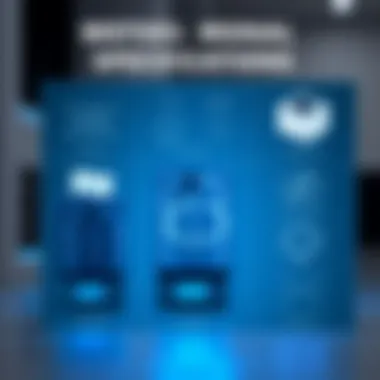
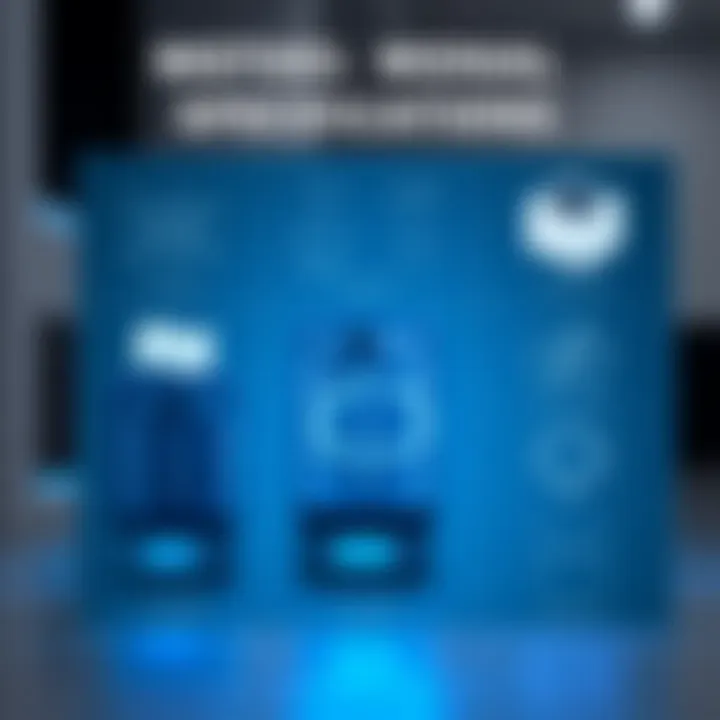
Ultimaker Software Solutions
Moving on to Ultimaker Software Solutions, these tools complement the hardware offerings, enhancing the overall experience of 3D printing.
Ultimaker Cura's Functionality
Ultimaker Cura, the company’s proprietary slicing software, plays a crucial role in making 3D printing accessible. Its user-friendly interface allows users to slice models with just a few clicks. Key to its functionality is the customization options available, which include scaling, rotation, and setting parameters for supports. This software is especially beneficial for tech enthusiasts and professionals looking to fine-tune their prints to achieve specific outcomes.
A notable unique feature is its ability to accommodate specific material profiles, optimizing settings according to the chosen filament. This means users can expect consistent results across various prints, which is essential for maintaining quality, especially in production settings.
Integration with Third-Party Software
Integration with Third-Party Software is another hallmark of Ultimaker’s approach. The ability to connect with various design and modeling software expands the usability of Ultimaker printers significantly. For example, Ultimaker Cura works seamlessly with platforms like Autodesk Fusion 360 and Tinkercad, making it easier for users to transition from design to printing.
This integration is invaluable as it broadens the horizons for users, allowing them to choose tools that best suit their workflow. However, it does require some technical knowledge from the user to fully leverage these integrations. In environments where tech support is scarce, this integration could pose challenges for newcomers.
Technical Specifications
The discussion around technical specifications holds significant weight in understanding Ultimaker products. These specs not only define the capabilities of the products but also directly influence the user experience and the effectiveness of the 3D printing process. For IT professionals, knowing the nitty-gritty details about these specifications helps them to make informed choices that align with the needs of their business or educational environments. As technology continues to advance, the interaction between users and machines hinges heavily on these intricate details, making this segment crucial in any examination of Ultimaker.
Material Compatibility
PLA, ABS, and Beyond
Discussing the compatibility with materials is essential to grasping how 3D printers can fit in diverse scenarios. PLA (Polylactic Acid) and ABS (Acrylonitrile Butadiene Styrene) are the most commonly used types, each offering its own set of advantages. PLA is a biodegradable plastic and is favored for its ease of use, making it a popular choice especially among beginners. This bioplastic also prints at lower temperatures, which diminishes warping and makes for straightforward setups.
On the other hand, ABS is known for its toughness and heat resistance, which makes it a common choice for functional parts. However, it requires higher temperatures and a delicated environment to minimize warping, presenting challenges for less experienced users.
Beyond these two, Ultimaker printers are capable of working with a variety of materials like nylon and TPU (Thermoplastic Polyurethane). This versatility enhances their usability in professional settings where specific material properties are required for prototypes or production parts. But it's worth noting that working with specialty materials can require tailored settings and an understanding of each material's unique properties.
Specialty Materials and Applications
Specialty materials play a prominent role in the advanced applications of 3D printing. These materials, including composites and engineering-grade filaments, bring distinct capabilities and expand the horizon of what's possible in a 3D printing landscape. For IT professionals, the choice of specialty materials can provide significant benefits by enabling the production of parts that are more resilient to stress, heat, or wear.
For instance, carbon-fiber filled filaments bolster strength while remaining lightweight, which is a characteristic that appeals to engineers looking to create prototypes that can withstand rigorous testing. However, the trade-offs can include higher costs and sometimes complicated printing processes. They also require specific print heads or nozzles to prevent wear. This means that while they can enhance the capability of the printer, they also demand more of the user’s attention regarding maintenance and setup.
Print Quality and Precision
Layer Resolution Settings
The quality of a 3D print is often judged by its layer resolution settings. This crucial aspect determines how fine or coarse the printed layers will be and has a direct impact on the surface finish of the final product. A lower layer height often translates into a smoother surface and more intricate details, which can be key for prototypes requiring fine features.
Choosing a layer resolution can also be tied closely to the time it takes to complete a print; more detailed prints generally take longer. For professionals, this balancing act between quality and time efficiency becomes a strategic decision that must align with project deadlines and quality standards.
Max Build Volume Considerations
Considering the max build volume is critical when selecting an Ultimaker model. The build volume dictates the size of objects that can be printed in one go, influencing both design choice and practical application. Larger volumes can facilitate printing bigger models without the need for assembly, thereby contributing to overall design integrity.
Yet, bigger isn’t always better. Often, models with a larger build volume might require more material and may lead to increased print times and potential failures, especially with larger objects that haven't been well calibrated. Thus, understanding the context in which the printer will be used can significantly impact the effectiveness and satisfaction of the 3D printing experience.
“For every hour spent printing, there’s a lesson learned. Knowing your specs makes all the difference.”
In summary, a thorough understanding of technical specifications—material compatibility, print quality, and precision—enables IT professionals and tech enthusiasts to leverage the capabilities of Ultimaker products fully. By considering both their strengths and limitations, users can tailor their choices to meet specific needs in prototyping, manufacturing, and beyond.
Applications of Ultimaker Products
Understanding the applications of Ultimaker products is vital for anyone looking to harness the full potential of 3D printing technology. In a landscape where rapid innovation is crucial, Ultimaker stands out by providing tools that not only meet current demands but also anticipate future needs. The impact of these applications can be felt across various sectors, including engineering, education, and manufacturing, highlighting Ultimaker’s flexibility and relevance in the modern technology space.
3D Printing in Prototyping
The prototyping stage is an essential aspect of product development. Ultimaker products allow designers to create quick prototypes, which serves an indispensable role in refining ideas and testing concepts before they hit the market.
Rapid Prototyping Benefits
Rapid prototyping enables designers to test and iterate their ideas efficiently. This specific aspect is paramount in reducing time from concept to market. With Ultimaker's printers, models can be produced in a matter of hours rather than days or weeks, letting teams validate designs swiftly. A key characteristic of this process is the ability to evaluate form and function without needing expensive molds or manual crafting. The flexibility of 3D printing brings forth a unique feature: the possibility of producing complex geometries that traditional methods struggle with.
However, one must also acknowledge some disadvantages. While the speed is a spectacular feature, the durability of some prototypes can leave much to be desired. As a result, careful consideration is needed when selecting materials for test prototypes.
Real-World Case Studies
When considering the impact of Ultimaker products, looking at real-world applications can drive home their effectiveness. Businesses across various industries have adapted Ultimaker technology for rapid prototyping. A standout example is a Canadian design firm that used an Ultimaker S5 to produce a series of functional prototypes for an innovative new gadget. This choice not only facilitated the quick evolution of the concept but also allowed for modifications based on immediate testing feedback.

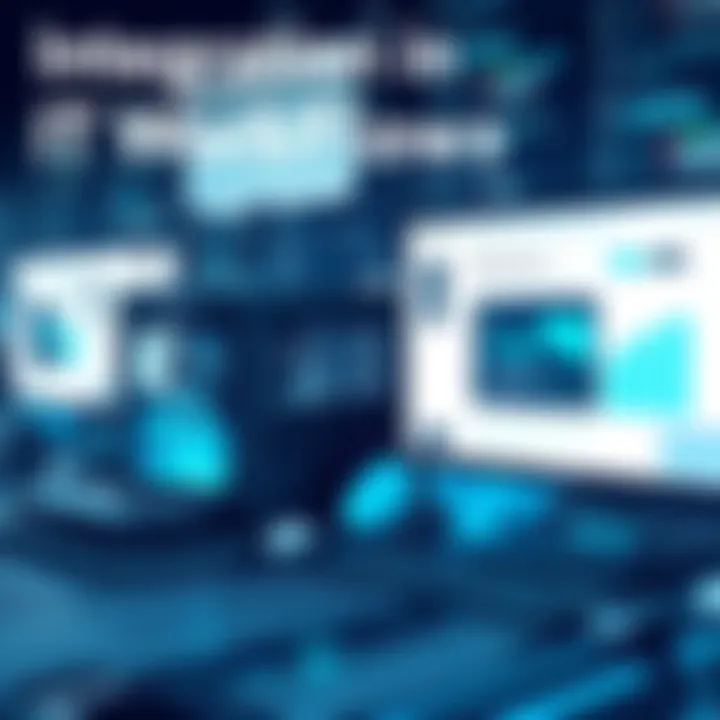
What makes this approach beneficial is the ability to pivot quickly—design changes can be incorporated on the fly, leading to more successful outcomes. One unique feature of using Ultimaker for case studies is the capacity to create not just visual prototypes but functional ones, allowing engineers to test physical properties. Still, there are challenges: for instance, understanding the limits of the material's performance can take time, and failures in prototype testing sometimes require backtracking in the development cycle.
Use in Manufacturing
The industrial landscape has seen a transformative shift with the integration of Ultimaker products into manufacturing workflows. They allow companies to not only enhance agility but also drive down costs, a win-win situation in a highly competitive market.
On-Demand Production
On-demand production is significant as it supports lean manufacturing principles. In short, this means producing materials and parts only when necessary, reducing waste and storage costs. With Ultimaker, businesses have the opportunity to produce custom parts quickly on-site, which not only expedites processes but also minimizes the bottlenecks often associated with traditional supply chains.
A key characteristic of on-demand production lies in its responsiveness. Production can shift in alignment with market needs and customer demands. It’s beneficial as it helps companies maintain lean inventories and enhances operational efficiency. However, one unique feature to consider is that while on-demand production is cost-effective, setting up appropriate digital systems and workflows can be an upfront investment.
Tooling and Fixtures
The relevance of Ultimaker in creating tooling and fixtures cannot be understated. This application plays a crucial role in stability and precision within manufacturing workflows. By fabricating jigs and fixtures, companies can enhance the accuracy of their operations. One noteworthy characteristic is the ability to custom-make these tools based on specific needs, thus eliminating the typical limitations found in off-the-shelf solutions.
Its unique feature is the adaptability in the manufacturing setup; businesses can experiment and improve their processes with tailored tools without incurring the high costs of traditional tooling methods. Yet, potential challenges could arise from ensuring that the produced fixtures meet durability requirements, needing careful material choice and print settings.
Comparative Analysis
In the contemporary 3D printing landscape, understanding how Ultimaker stacks up against its competitors is vital for IT professionals and tech enthusiasts. This comparative analysis sheds light on the strengths and weaknesses of Ultimaker products, helping to clarify their position in the market. By examining how Ultimaker aligns with or diverges from other brands, we can appreciate not only the unique features they offer but also the nuances that might influence purchasing decisions.
Ultimaker vs. Competitors
Key Differentiators
When considering what sets Ultimaker apart, the most spoken-about element is likely its commitment to print quality. This high standard is driven by a combination of precision engineering and constant innovation. For instance, Ultimaker's proprietary Cura software is regularly updated, gaining new features that enhance usability and compatibility with various materials. This software optimizes print settings based on user preferences and material specifics, allowing for an adaptive printing experience.
Moreover, Ultimaker's dedication to open-source technology allows users not just to use their printers but to modify and improve them as they see fit. This flexibility can be particularly beneficial for individuals looking to experiment and innovate. In contrast, many competitors have opted for a more closed ecosystem, which can often limit creativity.
Pros and Cons of Key Differentiators:
- Pros: High print quality, regular software updates, and open-source support enhance user experience.
- Cons: The initial cost of Ultimaker printers can be higher than those of some competitors, which might deter budget-conscious buyers.
Market Positioning
Ultimaker's market positioning leans heavily on its reputation for quality and performance rather than being the cheapest option available. This is a deliberate strategy; forbidding extreme price competition allows them to promote the value their technology provides. The company's focus is primarily on creators and professionals who prefer reliable outputs over the lure of lower prices.
In recent years, Ultimaker has made strides to penetrate various sectors such as education, design, and manufacturing. Positioning their brand as a leader in these niches is key for attracting new clientele who are looking for dependable solutions that will facilitate their creative or industrial processes.
Pros and Cons of Market Positioning:
- Pros: A strong reputation fosters consumer trust, and the targeting of specific markets increases relevance to key demographics.
- Cons: Being positioned as a premium provider can make it less approachable for new or budget-conscious users.
User Experience Comparisons
Usability Factors
User experience with Ultimaker products is often highlighted as a considerable advantage. The printers are designed with intuitive interfaces that reduce the learning curve. Many users report that they can start printing shortly after setting up the device, which can be a huge selling point. Moreover, the accompanying software, Cura, presents an organized layout that's easy to navigate, further boosting ease of use.
One feature appreciated by many is the remote monitoring via the Cura Connect platform, offering a blend of convenience and efficiency not always found in competitor products. This capability allows users to manage print jobs from anywhere, enabling them to stay productive even when away from their workstations.
Pros and Cons of Usability Factors:
- Pros: Easy setup and navigation of software enhances user experience, while remote monitoring adds convenience.
- Cons: Some experienced users may find the simplicity of features limiting for advanced projects.
Customer Support Evaluations
Ultimaker has frequently received high marks in customer support evaluations. Users often rave about the assistance provided through various mediums, including online forums, tutorials, and direct customer service. This strong support framework allows users to troubleshoot problems efficiently, which is crucial in business settings where time is of the essence.
Additionally, the Ultimaker community serves as a resource for sharing tips and improvements, embodying the cooperative spirit many expect from modern tech brands.
Pros and Cons of Customer Support Evaluations:
- Pros: Effective customer support and active user community enrich the product experience and reduce downtime.
- Cons: While support is generally strong, response times can vary based on user queries or peak periods.
Overall, the comparative analysis illuminates both the strengths and potential hurdles when considering Ultimaker products. This understanding is pivotal for making informed decisions in an ever-evolving technological landscape. For further insights into the commitment to quality with Ultimaker's competitors, please refer to Wikipedia and Reddit.
Future of Ultimaker Technology
The horizon for Ultimaker technology is not just bright; it’s akin to a vast, uncharted territory filled with opportunity. As 3D printing continues to carve its niche in modern tech, understanding its future ramifications becomes crucial. Ultimaker stands at the forefront, not merely innovating but reshaping perceptions about what’s possible in printing. This section delves into pivotal trends and industry insights that shape the pathway forward for Ultimaker products, linking technology's evolution with real-world applications.
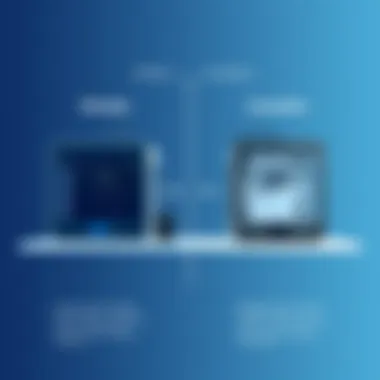
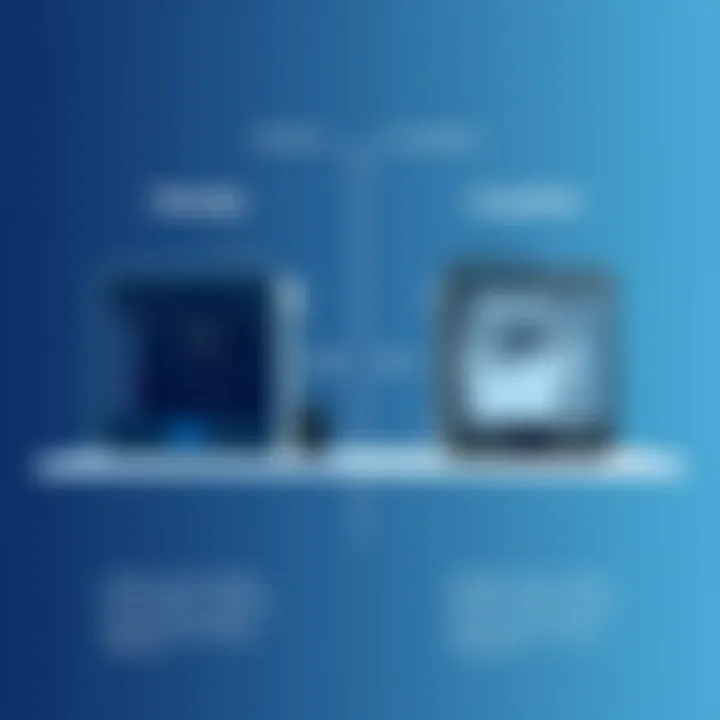
Trends in 3D Printing
Automation in Printing Processes
Automation in printing processes is steadily changing the landscape of 3D printing. It’s like taking the hand off the wheel, letting sophisticated software steer the course, enhancing efficiency and precision. By reducing human error and allowing continuous operation, automation offers businesses an edge by minimizing downtime. This is especially beneficial in projects with tight deadlines, where time is of the essence.
One key characteristic of automation lies in its ability to monitor and adjust printing parameters in real-time. For instance, if a layer does not adhere correctly, automated systems can modify extrusion rates, temperature, or speed instantly. This feature stands out as essential, erasing the need for constant human oversight and allowing IT teams to focus on more strategic objectives. However, while automation simplifies many processes, it does come with a price tag that might necessitate a thorough cost-benefit analysis before implementation.
Advancements in Material Science
Material science breakthroughs propel the capabilities of Ultimaker products to incredible heights. The focus here is not just on the 3D printer but also on what goes into it. New materials are being developed that expand possibilities, from tougher composites to bio-degradable plastics. The introduction of such materials allows for a greater range of applications, especially in industries focused on sustainability and innovation.
A notable feature of advancements in material science is the development of functionally graded materials. These materials possess varying properties throughout their structure, allowing for customized attributes tailored to specific needs. Considering the rapid pace of innovation in material technologies, every IT professional should be aware of how these changes can influence project outcomes. While the benefits are substantial, they aren’t without challenges; the introduction of new materials often requires significant adjustments in printing settings and processes, demanding ongoing education for users.
Industry Feedback and Insights
As Ultimaker progresses, it is vital to pay attention to user feedback. What are the professionals in the trenches revealing about their experiences? Industry insights often spotlight common pain points, such as the learning curve associated with sophisticated software or maintenance hassles that may deter adoption. Engaging in discussions on platforms like Reddit and specialized forums can yield real-world insights that refine technology and improve user experience. This ongoing dialog is essential; it doesn’t just inform developers but enriches the entire 3D printing ecosystem.
With Ultimaker’s commitment to continuous improvement, they harness this feedback to guide enhancements in their product offerings. This responsive approach makes the user community feel valued, affirming a trust that can often be delicate in tech.
“Staying ahead of trends and leveraging feedback is the cornerstone of Ultimaker's strategy.”
As you consider integrating Ultimaker technologies into your workflow, remain cognizant of these trends and insights. They have the potential to reshape not just how you view 3D printing but how you leverage it within your professional landscape.
Considerations for IT Professionals
Understanding how Ultimaker products fit into the broader landscape of technology is crucial for IT professionals. These products not only influence workflow efficiency but also impact strategic decision-making inside organizations. The thoughtful integration of Ultimaker printers and software into existing systems opens myriad possibilities for innovation and productivity. As professionals who usually focus on tech solutions, IT experts must consider several factors related to their business needs and infrastructure.
Assessing Business Needs
Cost-Benefit Analysis
The cost-benefit analysis offers IT professionals a grounded approach for evaluating the financial implications of adopting Ultimaker products. In this analysis, cost assessments include the purchase price, maintenance expenses, and operational costs like materials and electricity. On the benefit side, professionals must account for the time saved in production, the potential for rapid prototyping, and enhanced customization capabilities. An essential characteristic of this analysis is its comprehensive nature, providing a snapshot that encompasses both tangible and intangible costs and benefits.
A unique aspect of this analysis is that it goes beyond quick financial calculations. Instead, it allows companies to visualize long-term savings and potential ROI from minimizing outsourcing or reducing production time significantly. Yet a drawback could be the time investment needed to ensure accurate data collection for a reliable outcome.
"In the complex world of IT decision-making, every dollar counted can lead to more effective technology adoption."
Long-Term Value Considerations
Long-term value considerations dive deeper into sustainability and strategic alignment of Ultimaker products within a company's vision. Unlike instant benefits, these considerations look at how investments will support future goals, and what kind of capabilities will keep an organization competitive. A prominent characteristic is how it factors in flexibility; firms can adapt their 3D printing capabilities as market demands change.
This aspect is especially beneficial because it aligns closely with the principles of agile methodologies which many IT professionals are familiar with. It becomes crucial during planning phases to ensure that investments in technology remain relevant. However, a downside may arise due to the ever-evolving market, where predicting future needs can be akin to reading tea leaves.
Implementing Ultimaker Solutions
Infrastructure Requirements
When it comes to implementing Ultimaker solutions, infrastructure requirements play a pivotal role. IT professionals need to assess the adequacy of existing hardware and software environments to support new 3D printing technologies. Key considerations include power supply, network capacity, and integration with current systems. These requirements ensure that there are no bottlenecks that could hamper production efficiency.
A distinctive feature here is the importance of scalability. Companies planning to rapidly expand their 3D printing capabilities must account for infrastructure that can grow with them. A potential downside could be the upfront costs and time incurred in upgrading existing systems to seamless accommodate new technologies.
Training and Skill Development
The success of any technology adoption hinges on the human element, making training and skill development vital. IT teams must be equipped to operate Ultimaker devices effectively and utilize their software to the fullest. Investing in training not only enhances employee confidence but fosters innovation in the workplace.
Consideration must be given to the specific training needs, ensuring that courses are tailored to the skill levels of different team members. This is a highly popular choice as it creates a culture of continuous learning and adaptability. A drawback, however, could be employees' differing learning paces, requiring ongoing support and resources to ensure all team members reach a competent level.
By focusing on these various dimensions of adopting Ultimaker products, IT professionals can make more informed decisions— decisions that will bolster their organizations in the ever-evolving tech landscape.
Epilogue
The concluding section of our exploration into Ultimaker products holds significant weight as it encapsulates the entirety of our findings. Throughout this article, we have delved into various aspects of Ultimaker’s offerings, from their diverse product line to real-world applications, and their position in the market amid competitors. Each facet brings out the unique value Ultimaker contributes to the ever-evolving domain of 3D printing, particularly in the context of information technology.
In summary, one might identify three primary elements that stand out: the high quality of the equipment, the versatility of the software, and the comprehensive support provided to users. The Ultimaker S Series presents an elite choice for professionals seeking precision and reliability in their projects, while the Ultimaker Education Series empowers the next generation of innovators by enhancing learning experiences. Software solutions like Ultimaker Cura further streamline workflows, thus allowing enterprises to maximize productivity.
Additionally, integrating Ultimaker solutions into existing IT frameworks comes with considerations that can greatly benefit organizations. The cost-benefit analysis shows not just the potential for immediate returns but also long-term value in adopting technologies that are adaptable and forward-thinking.
Ultimately, understanding these elements paves the way to making informed choices when selecting 3D printing solutions that align with specific business needs and objectives.
Summarizing Key Points
- Quality and Precision: Ultimaker printers are recognized for their exceptional build quality and print precision, essential for prototyping and production.
- Educational Benefits: The Education Series of Ultimaker fosters engagement and skills development in students, providing a practical approach to learning.
- Software Integration: Ultimaker Cura, alongside compatibility with other software, allows seamless transitions between design and production.
- Market Positioning: Ultimaker stands out among competitors through its dedication to innovation and customer support, securing its position in the market as a leader in 3D printing technology.
Final Thoughts on Ultimaker Products
Going forward, it's vital for businesses and educators to keep an eye on the developments within Ultimaker's offerings, which continue to evolve as technology does. As more industries adopt 3D printing, understanding the best practices in leveraging these technologies will ensure that one remains at the forefront of innovation.



